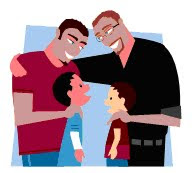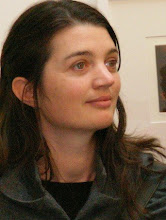Welcome to the Work, Love and Play Blog!
This blogsite is dedicated to discussion about the politics and culture of same-sex parented families.
The blog has been created by the research team who are running the Work, Love and Play study. Work, Love and Play is a longitudinal study looking at the experiences of families parented by same-sex attracted (gay, lesbian, bisexual, transgender and intersex) couples and sole-parents. The study started in 2008 and we have funding to keep it running until 2014. So far over 450 families from Australia and New Zealand have been involved in the study.
The study is being run by the Bouverie Centre at LaTrobe University, with involvement from researchers at the Australian Research Centre in Sex, Health and Society, the Division of Health Studies (Counselling & Psychological Health) at LaTrobe University, Relationships Australia, Melbourne University Department of General Practice and Deakin University School of Nursing.
The study is being funded by the
Australian Research Council,
Relationships Australia (national and
Victorian branch),
Vic Health (the Victorian Health Promotion Foundation) and
ACON (formerly the AIDS Council of NSW) with generous in-kind support from
Gay and Lesbian Health Victoria and the
Queensland Association for Healthy Communities.
The aim of the study is not to try to demonstrate whether or not the children of same-sex attracted parents have equal outcomes to other children. We feel like this work has been done. Instead, the focus of our study is the way in which same-sex families operate on a day to day level. Some questions we are interested in, among many others, are:
• How do same-sex couples with children organise their work and household responsibilities?
• What childcare options have same-sex parented families chosen?
• Do same-sex attracted sole-parents find support within the GLBTI community as parents?
• Are same-sex attracted parents connected to community networks and their extended families?
• Do same-sex attracted parents feel supported by community, welfare and health services?
We feel that questions such as these will help us better understand factors that support resilience in families parented by same-sex attracted couples and individuals. We also plan to use the findings from this study to provide some education and support to health and community services in working with same-sex parented families.
If you are reading this you may have been involved in this study in some way or have an interest in the study findings. We would love for you to stay in touch with us via this blog (if you are the sort of person who likes to read blogs!).
The purpose of the blog is partly to keep readers up to date with the study and our findings. But also to be a forum for discussion about political, social and cultural issues concerning same-sex parented families. We will post information about relevant current affairs, upcoming events and conferences and general ideas and commentary about issues relevant to same-sex attracted parents.
More formal information about the study (including publications of our findings) can be found on the
Bouverie Centre website.
Cheers,
Jennifer Power
Principal Researcher on the project
Email me here



.jpg)


